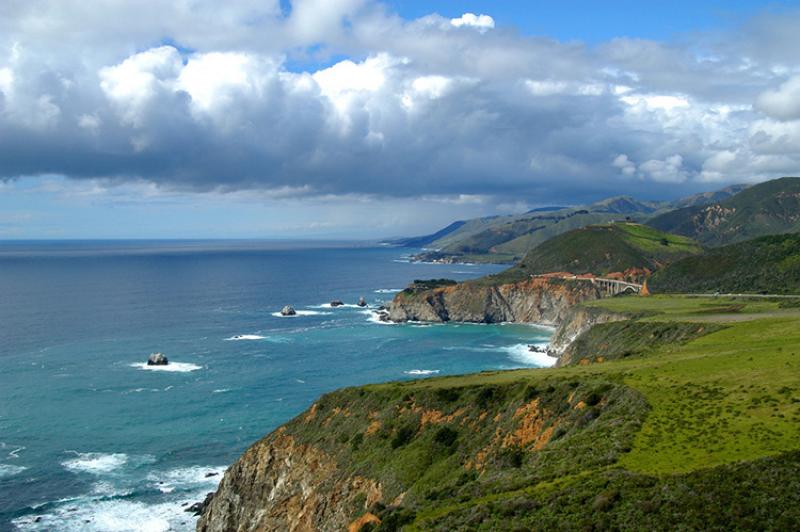A new report shows cooler waters on the West Coast were sandwiched between a marine heatwave and historically hot, dry conditions on land in 2021. NOAA Fisheries researchers from the Northwest and Southwest Fisheries Science Centers presented these findings to the Pacific Fishery Management Council.
The California Current extends from California to Washington. The annual California Current Ecosystem Status Report captures the big picture of the biology, climate, physical, and social conditions of the marine ecosystem. The assessment informs fisheries management by showing how the ecosystem is connected and changing. This, in turn, affects the distribution and abundance of marine species from salmon to whales.
Continuing Recent Cooling Trend in 2021
In 2021, the California Current continued a recent cooling trend, with researchers recording the coolest conditions on the continental shelf in nearly a decade. These cooler coastal waters resulted from strong wind-driven upwelling—nutrient-rich, deep ocean water coming to the surface.
Most recent upwelling conditions
The combination of cool, productive waters fuels the food web. Researchers reported good feeding conditions for many species. Fat-rich copepods, or small crustaceans, were highly abundant off the coast of Oregon. This created favorable conditions for juvenile salmon in Washington and Oregon. Further south, there were high abundances of anchovies and above-average sea lion pup counts. Seabird colonies on Southeast Farallon Island off central California and at Yaquina Head, Oregon experienced average to above-average productivity.
“The pattern of three regimes in 2021 with cool upwelled water over the shelf and slope providing a productive habitat between the more stressful conditions offshore and on land may foretell how the California Current will respond under warming conditions. This year’s Ecosystem Status Report summarizes the good and the bad while linking the three regimes together,” said Toby Garfield, one of the report’s lead editors from NOAA Fisheries’ Southwest Fisheries Science Center.
Drought On Land And Marine Heatwave Offshore Lead To Novel Conditions
Marine heatwaves have dominated the northeast Pacific Ocean for the past decade. This past year, the researchers tracked the seventh-largest marine heatwave in this region on record since 1982. However, unlike in past years, the warm waters remained offshore partly due to above-average coastal upwelling. These conditions allowed the swath of nearshore coastal waters to remain cool and productive for marine life.
The conditions on land also showed extremes. There was an early melt of below-average snowpack, and lower and warmer streamflows left less spawning and rearing habitat for salmon. The extreme drought, wildfires, and record-high air temperatures drew reservoirs far below capacity. This forced hatchery managers in the Sacramento/San Joaquin River region to truck many smolts to San Francisco Bay instead of releasing them in the river.
The unique combination of hot-cold-hot conditions was a novel phenomenon for researchers and shows early signs of continuing into 2022. “Until the last two years, we hadn’t tracked conditions like these before in the California Current,” noted Chris Harvey, one of the report’s lead editors from NOAA Fisheries’ Northwest Fisheries Science Center. “The system is throwing natural experiments at many of our species, where they're dealing with quite good conditions at one point and bad conditions at another point. It's put us in a place where we almost have to expect surprises, and we will learn a lot about how species respond to this climate variability in the years ahead.”
Informing Ecosystem-based Management
The report is part of a larger NOAA-wide initiative that provides a consistent national approach to understanding and managing ecosystems. The researchers use a unique approach where social, biological, and physical scientists can work together with stakeholders and managers. This allows for integrating information on all components of an ecosystem, including human needs and activities, into the decision-making process. Managers can then balance trade-offs and determine what is more likely to achieve their desired goals.




